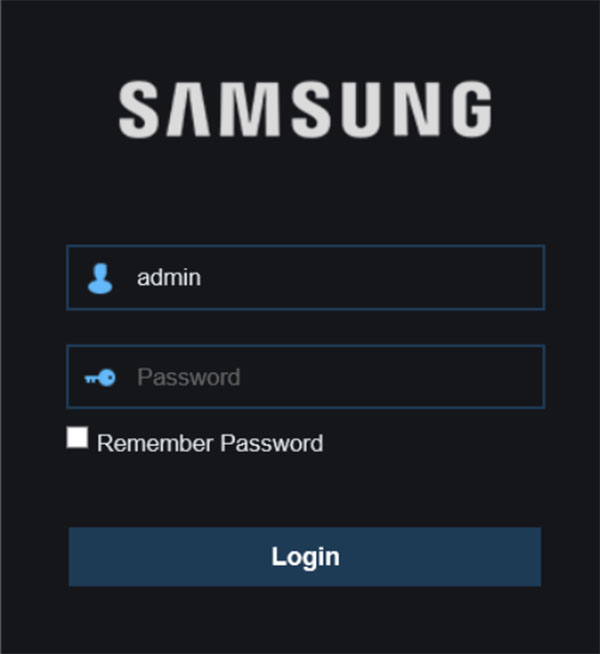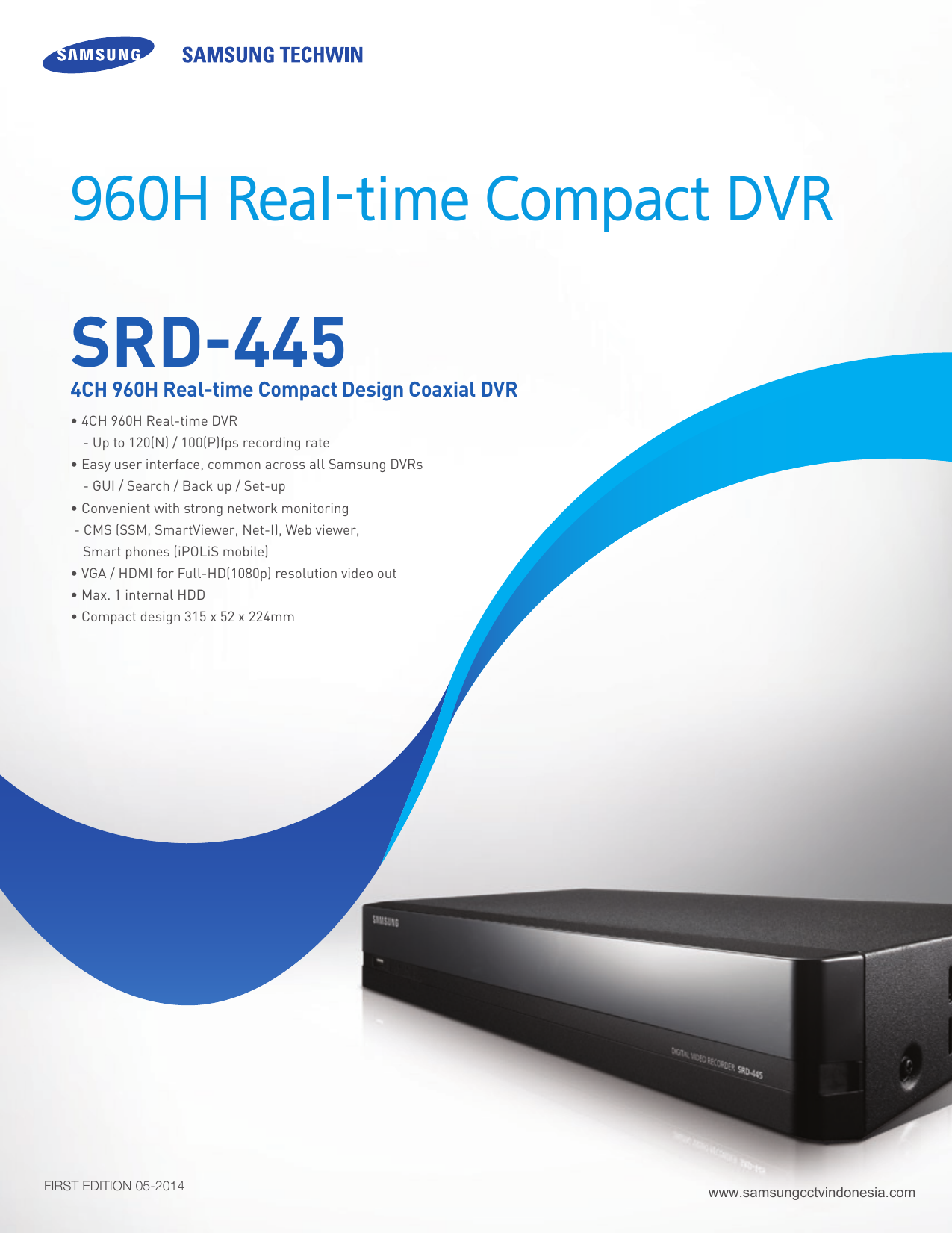
We will go over what these pieces of information are, and the easiest ways to find them.

This means IP addresses, login credentials, port numbers needed for your DVR, all of which is essential information. The first thing you should do when configuring port forwarding is determine all of your network information.
#Web viewer for samsung dvr defult user how to#
How to do Port Forwarding Step 1: Determine Router and Computer IP Address, and Router Password As long as you configure everything correctly in both the DVR and your router, everything should work fine. Be sure to change the HTTP port value from 80 to 8080 in the DVR's networking section. In such an event, you will make a rule for port 8080 or something similar instead of port 80. If you have a residential internet service plan, chances are port 80 is being blocked by your ISP. If your Internet Service Provider (ISP) blocks any of these ports, you can always change them from the default values by accessing the network setting menu in your NVR or DVR. One port rule for port 80, and one rule for port 37777. You must make 2 individual rules in your router’s firewall settings. What you need to do on your router?įor our video recorders, at a minimum you must enable port forwarding rules for ports 7 for remote viewing to work smoothly.

RTSP is an advanced feature that allows integration of camera streams coming to the DVR to be connected to another device, like a access control system or for embedding video on a website. Port 554 - This is an optional TCP and UDP type port that allows video to be accessed from the DVR using RTSP protocol. Port 37778 - This is a UDP type data streaming port that is optional. there must be a port forwarding rule for this port enabled on your router or remote viewing will not work. Port 37777 - This is a TCP type video streaming port that is necessary for viewing video using any method, i.e. It is only necessary if you want to be able to view the login webpage. Port 80 - This a HTTP traffic port that serves up the webpage you see in Internet Explorer. All of our recorders have the following default ports configured when they ship: For recorders purchased from CCTV Camera World it is simple. What you need to know about your DVR?ĭepending on the manufacturer of your surveillance video recorder, it will use specific ports for web login, data communication, and video streaming to serve up the camera feed. Unless you enable port forwarding in your router you will not be able to view your cameras from elsewhere or from your phone using its cellular data connection. The firewall will not block local traffic on the network from accessing the DVR, so you will still be able to view your camera system as long as you are at home and on the same network as the DVR. This firewall will also block you from accessing your newly purchased DVR or NVR when you are away from home, i.e. Here's a brief explanation of why this happens:Įvery router these days has a built-in firewall which blocks traffic from the internet from accessing the internal local network behind the router.

We commonly hear from customers the complaint that they are able to see their video recorder from a computer on the same router, but not from their phone or from a computer at another location.

This guide will take you through the steps of configuring port forwarding on your router, using a Arris TG862G broadband router/modem as example. It is a configuration setting in your router that must be set properly in order to view your security camera system from the internet. Port forwarding is essential to making your security DVR or NVR accessible from online using either your computer or mobile device.


 0 kommentar(er)
0 kommentar(er)
